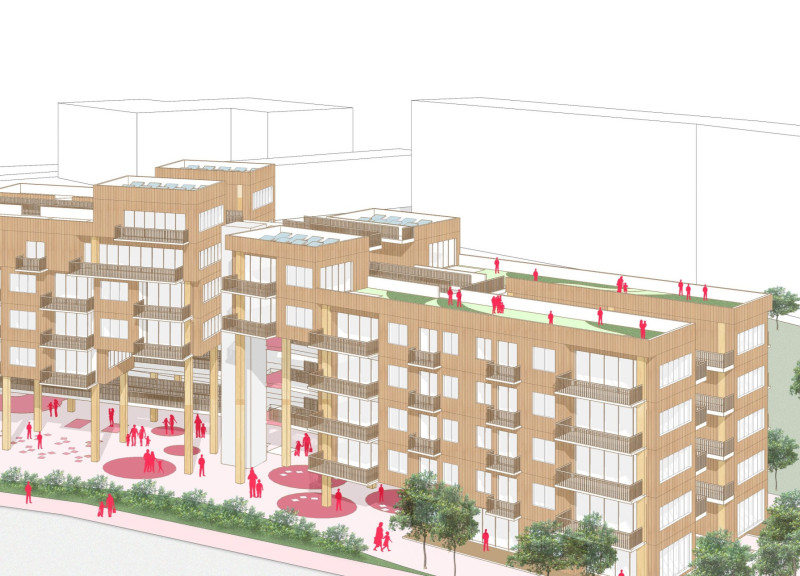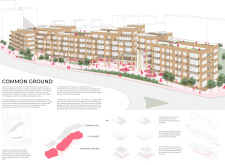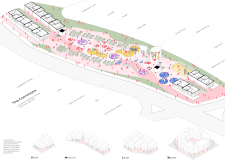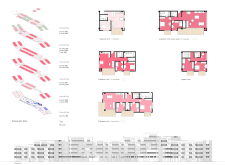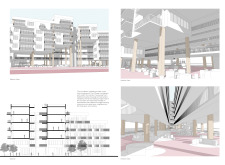5 key facts about this project
Common Ground is located at the Robin Hood Garden Estate in London and aims to enhance community living through its thoughtful design. It creates a mix of private and public spaces that encourage interaction among residents and visitors. The concept centers on breaking down traditional boundaries, making it easier for people to connect and engage with their environment. This innovative approach addresses the need for accessible community spaces in urban settings.
Community Engagement
The design incorporates several communal facilities that promote social interaction. These include a play area, a community library, and an open cinema, which serve as gathering spots for diverse groups. By providing these spaces, the project fosters a sense of belonging while encouraging collective activities. It addresses issues commonly associated with isolated housing areas by nurturing community ties.
Architectural Elements
A key feature of Common Ground is the Common Hill, an elevated section that invites exploration. This design element creates a natural transition from buildings to outdoor areas, encouraging residents to spend time outside. The arrangement of housing modules is intentional, promoting movement and facilitating interaction among those who live here. This design aims to create a lively atmosphere where people can come together and form connections.
Sustainable Practices
Sustainability is a primary focus, with timber frame construction and wood cladding used for the façade. These choices help lower the building’s carbon footprint. The use of timber not only supports ecological goals but also adds warmth to the design. A rooftop garden and solar panels enhance the environmental benefits, making the building more energy-efficient and livable. This focus on sustainability provides a practical example for future urban housing developments.
Circulation and Accessibility
The circulation design enhances accessibility throughout the site. Two pathways run alongside a central void, making all housing units easy to reach from the ground level. This layout promotes movement and encourages informal interactions among residents, creating a friendly atmosphere. It mirrors traditional single-family homes, where neighbors often share experiences while enjoying their own spaces.
The distinct integration of elevated modules creates varied outdoor areas for residents to enjoy. These green spaces enhance the overall quality of life and promote a strong connection to nature, making common areas inviting and useful for all community members.


